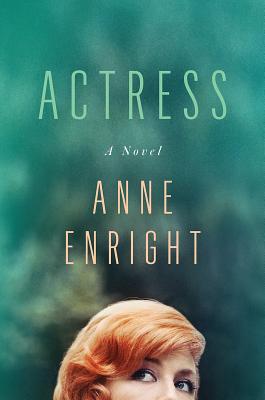‘The Wren, the Wren’ by Anne Enright (2023) – 273 pages
 In ‘The Wren, the Wren’, Phil McDaragh is a famous Irish lyric poet. His nature poems about the flora and fauna of Ireland, a number of which are reprinted in the novel, have brought him renown beyond Ireland. ‘The Wren, the Wren’ is the story of his first family over many years, mainly from the perspective of his daughter Carmel and granddaughter Nell.
In ‘The Wren, the Wren’, Phil McDaragh is a famous Irish lyric poet. His nature poems about the flora and fauna of Ireland, a number of which are reprinted in the novel, have brought him renown beyond Ireland. ‘The Wren, the Wren’ is the story of his first family over many years, mainly from the perspective of his daughter Carmel and granddaughter Nell.
In the first chapter, the granddaughter Nell is already 22. Phil is dead. Nell is in an abusive relationship with her boy friend Felim.
“I found it hard to tell the difference between sex and getting hurt in other ways.”
And then we jump back in time and we get some of the history of this family. The poet Phil and his wife Terry are married, living in Dublin. They have two daughters, Carmel and Imelda. When Carmel is 12, her mother Terry had to have one of her breasts removed and she has taken abed for a while. This is when Phil decides to move out and get divorced.
“They lived together in Dublin for some time he said, but she got sick, unfortunately, and the marriage did not survive.”
This is the first sign that this famous poet Phil McDaragh is not all that he is made out to be, not such a nice fellow. Phil goes to the United States, and meets a younger woman there whom he marries. Not only did Phil desert his Irish wife when she was ill, he left her with the debts he incurred in Ireland after he left her.
“It was so easy to hate this man – the facts spoke for themselves – but it was still hard to dislike him. And it was devastatingly easy to love him.”
Next we jump forward to when Carmel is a young woman. She finds herself pregnant. The father could be several guys that she has slept with, and Carmel decides to keep the baby, Nell, on her own.
“She had not been a good mother. Carmel knew that. All the love in the world would not make her a good mother. It was always such a wrangle. She could not hold her daughter, and she could not let her daughter go. “
Nell herself goes through some wild times as a young woman just as her mother Carmel had. Will she ultimately right herself? That is the question.
Later Phil’s American wife writes Nell a letter containing the following line:
“We who loved Phil knew, on some level, that we loved him not in spite, but because of his ‘badness’ in those days, that was quite the thing.”
And Carmel remembers a time with her father:
“With his fake modesty and feigned sorrow. Her father was up there being a bastard for all time.
He had a self-important heart.”
Somehow Phil’s poetry, some of which is reprinted in the novel, seemed more like fake poetry than real poetry to me. It is fictional.
‘The Wren, the Wren’ does show the profound effect that the behavior of someone in one generation can have on their future generations.
Grade : B


Recent Comments